Mitchell PH-XXV
Year built
1944
Aircraft
VB-25N Mitchell
Base
Gilze-Rijen Air Base
The B-25J-20-NC SN 44-29507 now flying as "Sarinah" was accepted by the USAAF on September 28, 1944, and delivered on September 30, 1944. She departed the same day to Moody Field, Georgia. The TB-25J trainer-bomber came on duty with 2144 Base Unit, ATC starting October 7, 1944. She was then transferred to Turner AAF where she flew for 2109 Base Unit, ATC and then 2100 Base Unit, ATC at Maxwell AAF, AL. Once based at Maxwell AAF she was converted to CB 25J. In 1948 she was transferred to Selfridge AAF and flew for the 56 MSURI. Four months later she returned to Maxwell AAF and flew for the 502 AUPF and 3800 AUWg. In 1950 she was flown to Brookley AAF for maintenance which was completed 3 months later and she returned to Maxwell AAF. In 1954 she was flown to Birmingham AAF for maintenance and conversion to VB-25N which was completed later that year. After conversion, she flew back to Maxwell AAF where she served until her retirement in 1958. During her Air Force career, she amassed nearly 6200 flight hours.
In July of 1959, she was sold to Fogle Aircraft in Tucson, Arizona. Her civil registration was assigned as N3698G at that time. In November of 1959, she was sold to Aero Enterprises in Elkhart, Indiana. In March of 1962, she was sold to Verco Tropical Fisheries in Columbus, Ohio. She was converted to carry cargo in the bomb bay and waist area in December of 1962. She was then sold in February of 1966 to Robert R. Johnson from Ft. Lauderdale, Florida. In November 1968, she was owned by Austin Williams. Sold again in July 1972 to Ernest G. Trapaga from Redondo Beach, California. In September of 1974, she was purchased by I. N. Burchinal of Paris, Texas. Then, in September of 1979, she was sold to Robert Wingate, then back to Burchinal in November who sold her to Reyline Aviation from Kissimmee, Florida. In June 1981 she was sold to Donald Webber of Baton Rouge, Louisiana. She flew as "Cochise". In December of 1989, she was sold to AMHO Corp from Wilmington Delaware and the registration was changed (in 1990) to N320SQ (representing the Dutch B-25 Mitchell 320 squadron). She was then ferried to Eindhoven, the Netherlands May 22-25 1990. The bomber was operated by the Duke of Brabant Air Force (DBAF) at Eindhoven Airport, Netherlands, who owned the bomber since 1996. From 1990 to 1999 she flew in RAF colours as "Lotys II". In April-May 1999 she was repainted in former ML-KNIL (NEIAF) colours and renamed "Sarinah". In 2009, her civil registration was changed to the current PH-XXV. Ownership was transferred in 2010 to the Royal Netherlands AF Historical Flight after a merger with DBAF.
| Back to Top |
North American VB-25N Mitchell
The North American B-25 Mitchell is an American medium bomber that was introduced in 1941 and named in honour of Major General William "Billy" Mitchell, a pioneer of U.S. military aviation. Used by many Allied air forces, the B-25 served in every theatre of World War II, and after the war ended, many remained in service, operating across four decades. Produced in numerous variants, nearly 10,000 B-25s were built. These included several limited models such as the F-10 reconnaissance aircraft, the AT-24 crew trainers, and the United States Marine Corps' PBJ-1 patrol bomber.
The Air Corps issued a specification for a medium bomber in March 1939 that was capable of carrying a payload of 2,400 lb (1,100 kg) over 1,200 mi (1,900 km) at 300 mph (480 km/h) North American Aviation used its NA-40B design to develop the NA-62, which competed for the medium bomber contract. No YB-25 was available for prototype service tests. In September 1939, the Air Corps ordered the NA-62 into production as the B-25, along with the other new Air Corps medium bomber, the Martin B-26 Marauder "off the drawing board".
Early into B-25 production, NAA incorporated a significant redesign to the wing dihedral. The first nine aircraft had a constant dihedral, meaning the wing had a consistent, upward angle from the fuselage to the wingtip. This design caused stability problems. "Flattening" the outer wing panels by giving them a slight anhedral angle just outboard of the engine nacelles nullified the problem and gave the B-25 its gull-wing configuration. Less noticeable changes during this period included an increase in the size of the tail fins and a decrease in their inward tilt at their tops.
NAA continued design and development in 1940 and 1941. Both the B-25A and B-25B series entered USAAF service. The B-25B was operational in 1942. Combat requirements led to further developments. Before the year was over, NAA was producing the B-25C and B-25D series at different plants. Also in 1942, the manufacturer began design work on the cannon-armed B-25G series. The NA-100 of 1943 and 1944 was an interim armament development at the Kansas City complex known as the B-25D2. Similar armament upgrades by U.S-based commercial modification centres involved about half of the B-25G series. Further development led to the B-25H, B-25J, and B-25J2. The gunship design concept dates to late 1942 and NAA sent a field technical representative to the SWPA. The factory-produced B-25G entered production during the NA-96 order followed by the redesigned B-25H gunship. The B-25J reverted to the bomber role, but it, too, could be outfitted as a strafer.
NAA manufactured the greatest number of aircraft in World War II, the first time a company had produced trainers, bombers, and fighters simultaneously (the AT-6/SNJ Texan/Harvard, B-25 Mitchell, and the P-51 Mustang). It produced B-25s at both its Inglewood main plant and an additional 6,608 aircraft at its Kansas City, Kansas, plant at Fairfax Airport.
After the war, the USAF placed a contract for the TB-25L trainer in 1952. This was a modification program by Hayes of Birmingham, Alabama. Its primary role was reciprocating engine pilot training.
The development of the B-25 was the North American XB-28, designed as a high-altitude bomber. Two prototypes were built with the second prototype, the XB-28A, evaluated as a photo-reconnaissance platform, but the aircraft did not enter production.
A number of B-25s were converted for use as staff and VIP transports. Henry H. Arnold and Dwight D. Eisenhower both used converted B-25Js as their personal transports. The last VB-25J in active service was retired in May 1960 at the Eglin Air Force Base in Florida.
| Back to Top |
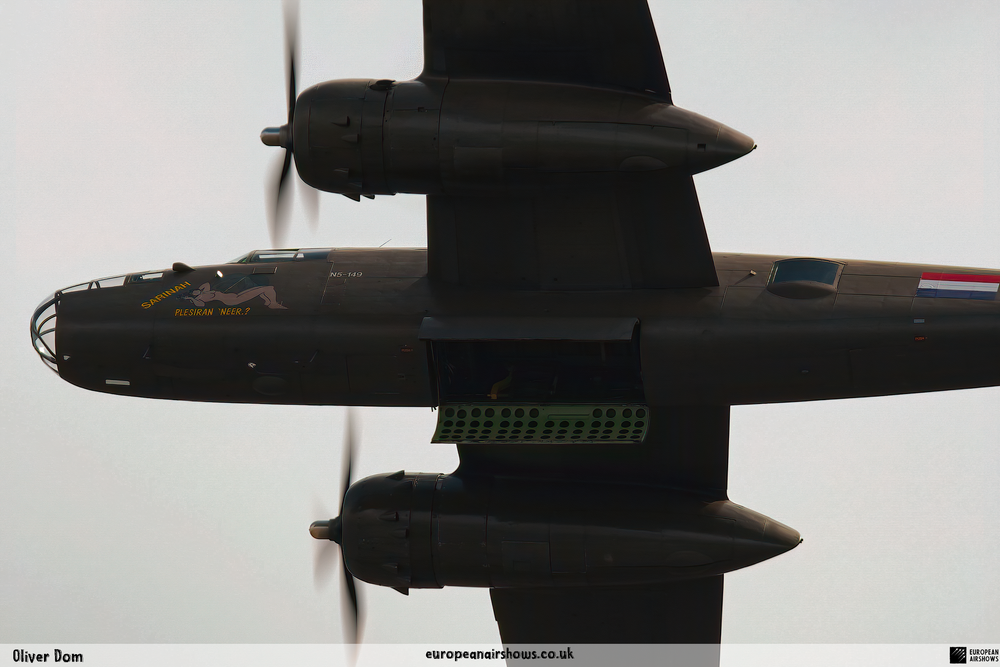
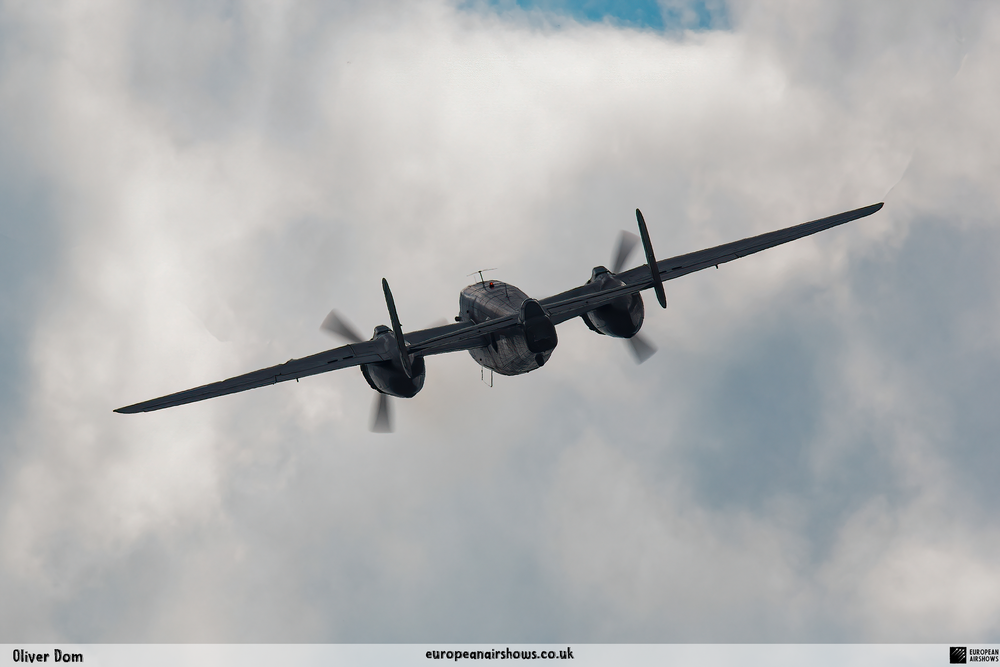
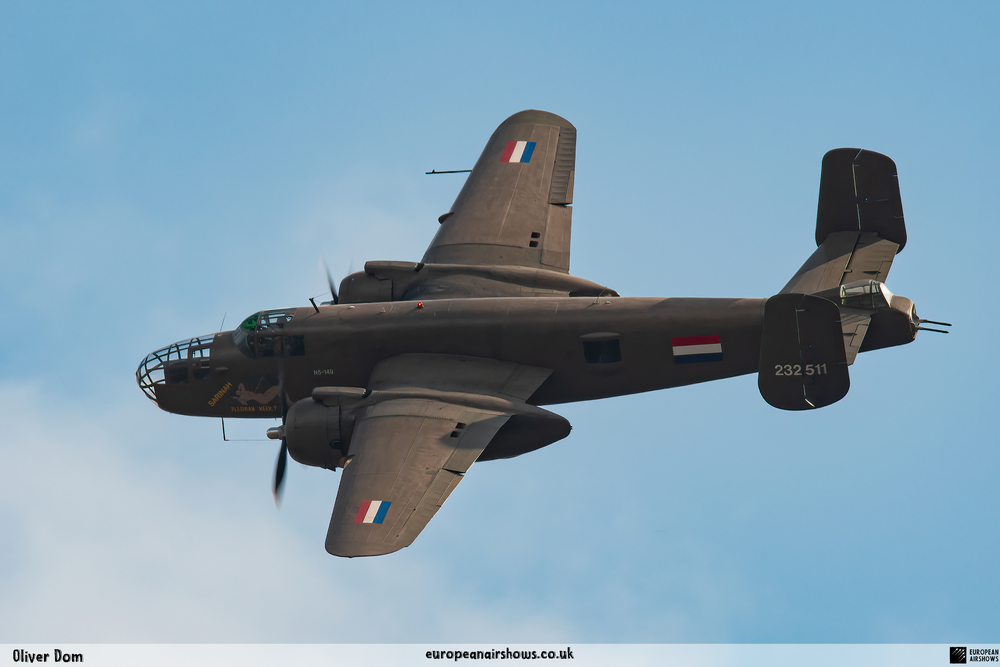
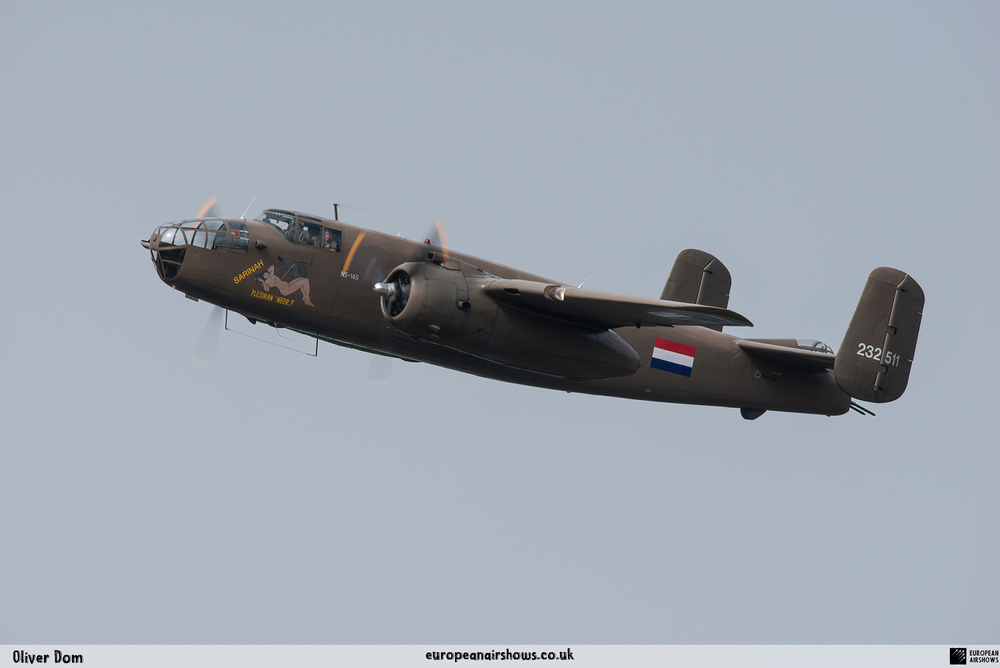
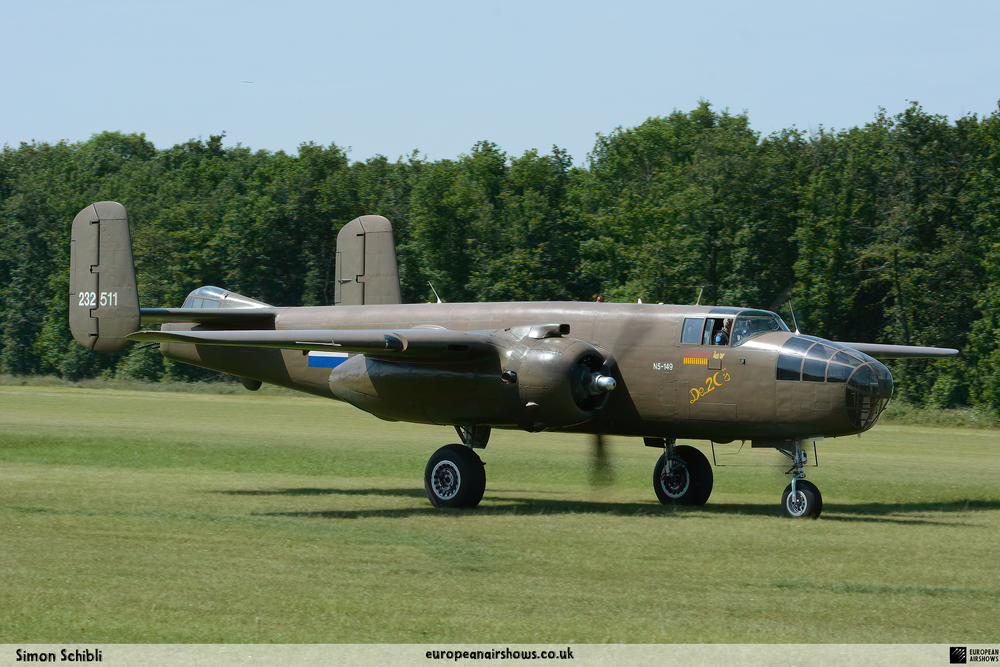
| Back to Top |






